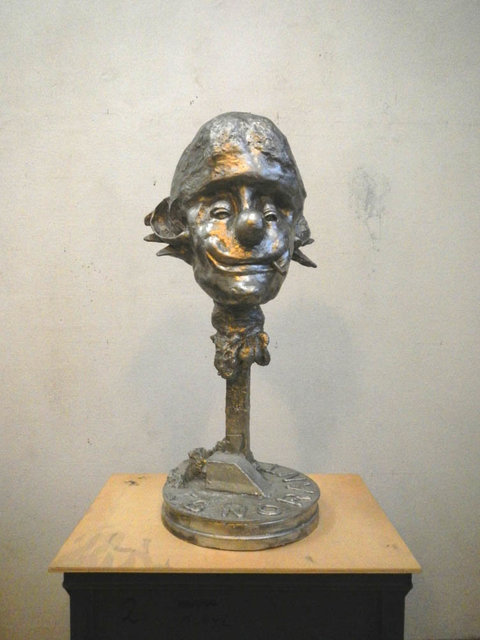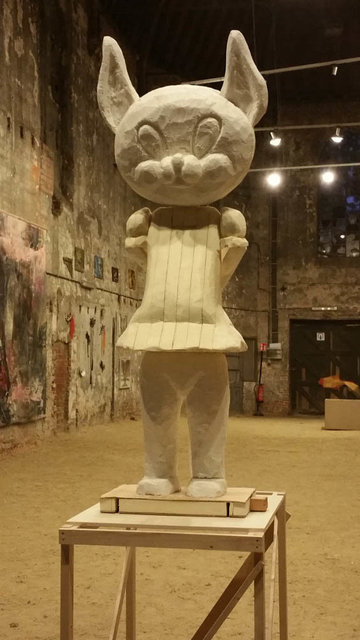Charles Vreuls and Roland Berning
Falsche Frage / TOVER Mitglied
12 January - 16 February 2019
An exhibition of painting, sculpture, work on paper, and film
Falsche Frage / TOVER Mitglied
12 January - 16 February 2019
An exhibition of painting, sculpture, work on paper, and film
*Falsche Frage* (The Wrong Question): It is not images or visual impressions which influence the origin of the work by *Charles Vreuls*. The process and the final result are driven by musical sensations evoked by the works of composers ranging from Henry Purcell to Bernd Alois Zimmermann, by the summoned worlds of writers and poets like Hölderlin, Sebald and Malaparte, or through philosophical concepts like duration (Henri Bergson) and spatial sense (Peter Sloterdijk). Interestingly, Charles Vreuls exhibited over thirty years ago at Suzanne Biederberg Gallery and the thematic similarity then and now is striking. One of the previous shows was entitled “*Stille und Umkehr*” (Silence and Reversal), also based on the music of Zimmermann. Also on view will be a series of drawings inspired by *Der Einzige un sein Eigentum* (The Ego And Its Own), an essay by 19th century philosopher Max Stirner. *TOVER* (CHARM) is a joint project with Roland Berning, with whom Vreuls frequently collaborates. TOVER, which evolved in the early nineties, is a strategy to make art, separate from the mechanisms which govern the artistic process to such an extent that they have ended up functioning as laws. TOVER (CHARM) is a type of ‘quark’, in physics an elementary particle, the nature of which is not yet entirely clear. Its name was inspired by James Joyce and the names of its types ("flavors": up, down, top, bottom, strange and charm) a whimsical nod to the unpredictable and – for classical physics – illogical laws of quantum mechanics. The actions of TOVER are not predictable, necessary or logical either… "--- Three quarks for Muster Mark! / Sure he hasn't got much of a bark / And sure any he has it's all beside the mark.” (from James Joyce's Finnegans Wake, page 383, Faber Publ. 1975) *Roland Berning'*s sculptures, shown at the suggestion of Charles Vreuls, while unrelated to TOVER, date to TOVER's foundation. A characteristic of all the sculptures is that they portray figures who exist in a parallel world. As characters the ‘Ignorant’ and the ‘Dunce’ do not seem entirely in tune with our reality, while the ‘Dwarf’ is not part of our world at all and the ‘Cat’ has an almost narcissistic self-confidence and seems unassailable, despite being made from delicate material. These sculptures skirt laws and, in their intangibility, safeguard the autonomy of art, in the same way that TOVER does. Therefore it is not surprising that the back of the head of the ‘Ignorant’ is marked with the last word from Finnegans Wake: ‘The’. At the Suzanne Biederberg Gallery, the sculptures are included in a small installation which enhances their intrinsic mutual connection. *Arthur d’Ansembourg* (1960) studied philosophy at the University of Amsterdam and in Munich. Since 2002 he has lectured on Aesthetics and Philosophy of Art and conducts Socratic dialogues on art and gives philosophical guided tours in museums. In February 2018 he published “*Er Zit Iets Achter: Over De Filosofie En De Kunst*" (There’s Something Behind It: On Philosophy And Art).







